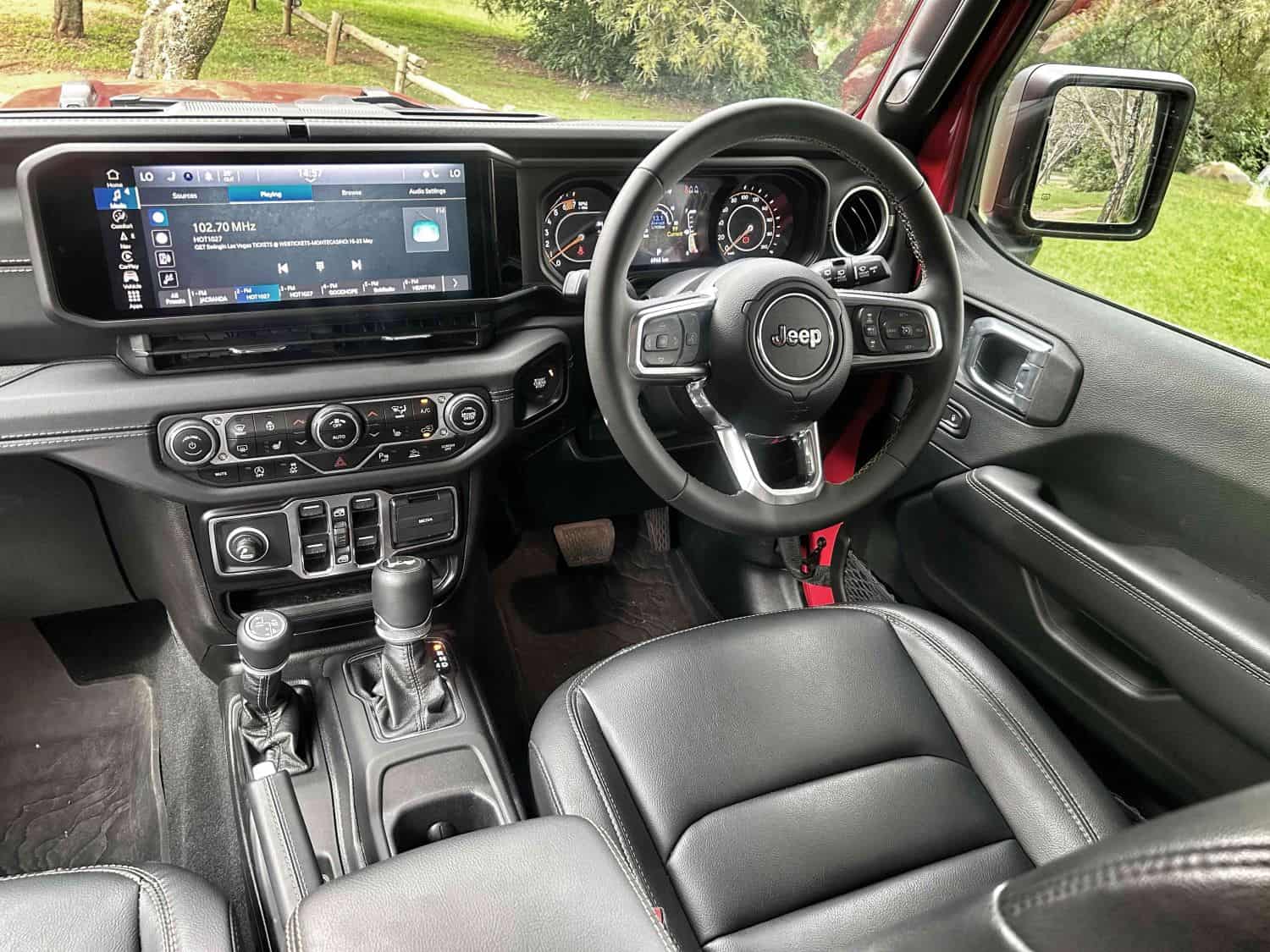New mill shows that it is not only milk and Coke that comes in two-litre format.

The Jeep Wrangler features an updated front grille. Picture: Jaco van der Merwe
A local bakkie manufacturer was once the butt of all jokes when it introduced downsized 2.0-litre engines. “Only milk and Coke come in two litres,” was the common banter doing the rounds.
The Jeep Wrangler Unlimited Sahara, recently delivered to our offices for a seven-day stay, served as a timely reminder of those days. After 13 years, Jeep retired the Pentastar naturally aspirated 3.6-litre V6 petrol engine in favour of … you guessed it, a 2.0-litre four-cylinder turbo petrol mill. An eight-speed automatic gearbox still sends the power to all four wheels.
The ”no replacement for displacement” protagonists will choke in their milk to hear that the 200kW of power the blown mill produces is 13kW down from the V6. And the 47Nm additional torque for a total of 400Nm won’t be enough to flip their Coke bottle tops.
ALSO READ: Bent-six makes way for turbo four as Jeep prices facelift Wrangler
Smooth torquey ride
Off-road enthusiasts, however, should be chuffed with the addition of a full-float rear axle, four protective skidplates, revised front and rear suspension and retuned shock absorbers.
But like anything else that changes in life, the proof is always in the pudding. And in the case of the Jeep Wrangler, it’s a damn nice pudding. Almost like a smooth milk tart – pun intended.

At first, some low-down lag was a bit annoying during pulling off. But as we spent more time in the rugged off-roader, we got the hang of it.
The trick is to respect it as a relaxed accelerator and not as a sensitive accelerator being lazy. You also then start to appreciate the generous torque on tap.
Very much the same applies to the brakes. The brake pedal needs quite a bit of input to achieve the desired result. But once you get the hang of it, you forgot that you had any initial issues. With hardly none of the usual comment from the passenger seat that you brake too late.
ALSO READ: Facelift Jeep Wrangler and Gladiator arriving soon with new engine
Typical Jeep Wrangler niggles
Sporting the aerodynamics of a brick, the Jeep Wrangler was surprisingly smooth on the open road. And as one passenger put it, “quite quick too”. But once you go over the national limit typical Wrangler-type things start rearing their heads.
These included wind noise, creaking from the removed fibreglass roof panels and their brackets, and the windscreen being so damn upright that no flying bug can dodge it. But these make little difference as they are part and parcel of the package.
Fuel consumption was not a major improvement from the 3.6-litre. After achieving 14.1L/100km in the slightly heavier Jeep Gladiator bakkie a few years ago, we managed 13.4L/100km in the 2.0-litre Wrangler. This included a fair bit of open road driving, which made it a much of a muchness between the two in terms of economy.
Adding to the driving comfort is the new 12.3-inch Uconnect 5 infotainment system which now comes as standard. It supports wireless Apple CarPlay and Android Auto, while there are also integrated satellite navigation and type-C USB ports.

Keeping the original taste
Elegant leather seats, which are heated in front, work well together with upgraded materials along with the typical Wrangler touches which comes in the form of grab handles, exposed door panels and centre-mounted window switches.
A comprehensive set of safety features is standard.
While you could argue that the car hasn’t changed too much externally since World War II, the updates did introduce a seven-slot grille with a textured black inner finish and aerial now integrated into the windscreen.
At R1 249 900 the Jeep Wrangler Unlimited 2.0T Sahara is the entry point to the range. And like the engine, the price won’t deter anyone who wants one. Almost like a Coke with less sugar, it has kept up with the times, while still keeping the true Jeep Wrangler taste.
Download our app




